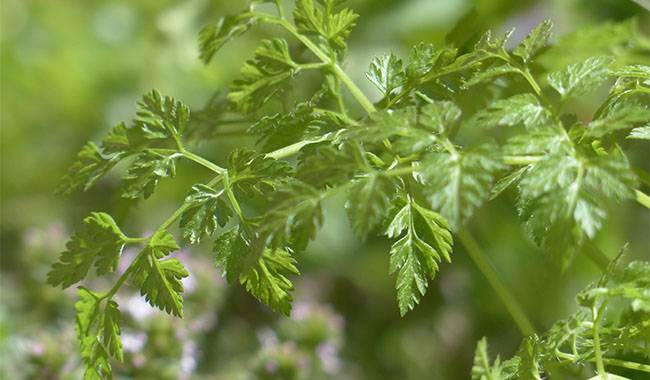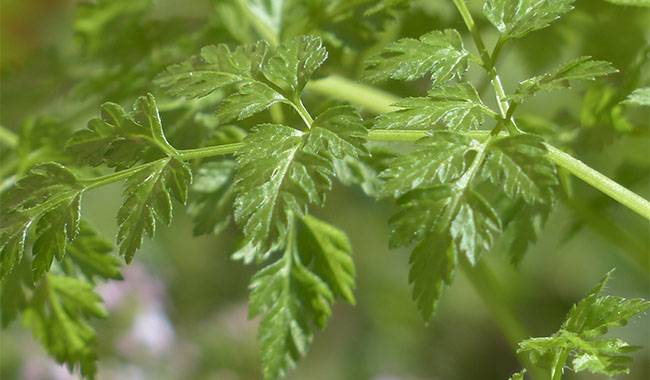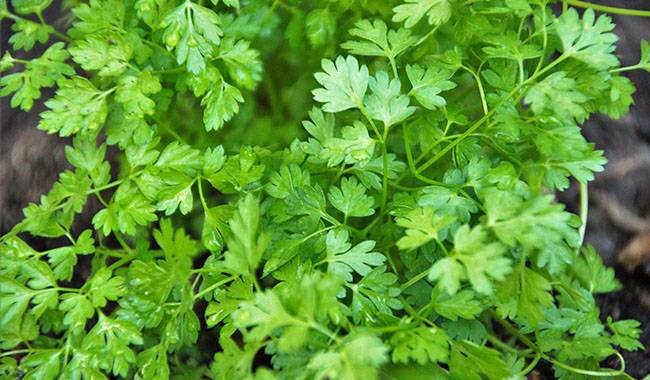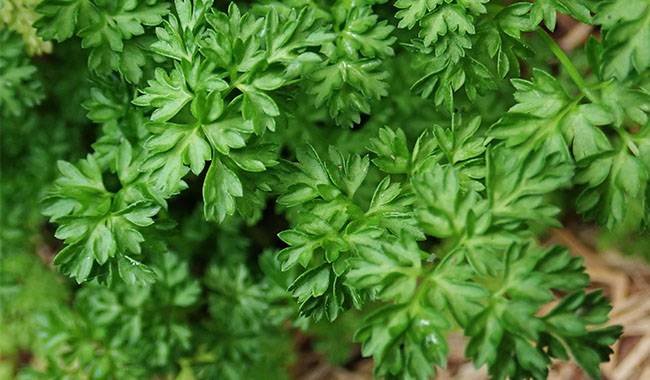
How to grow Chervil and what are its characteristics? Many spice lovers know what Chervil (cherry bush, French parsley) is, it is an annual herb in the Umbelliferae family, 8-28inch (20-70 cm) tall, similar in appearance to the usual garden parsley.
Chervil leaves have a fragrance of coriander, tarragon and fennel with a slightly bitter taste. The rhizomes have a grayish tint and are similar in shape to carrots, with cylindrical stems and serrated, dissected leaf edges and small white flowers forming a compound umbrella. The seeds finally ripen in early autumn.
Important note: Never prepare stored Chervil by freezing, the dried leaves are not as fragrant.
HOW TO GROW CHERVIL IN POTS
The main thing for Chervil to grow successfully in pots is to sow the seeds correctly and provide minimal care in the future.
Fresh Chervil seeds require no additional treatment before sowing and are sown immediately in prepared soil. How to grow Chervil at home and keep it always ready, we’ll show you now.
CHERVIL’S LIGHT REQUIREMENTS
Chervil is considered to be a shade loving plant, so it does not need extra light during the winter when light hours are short. In the fall and winter, Chervil bushes only need short periods of sunlight and artificial light at night.
WHAT IS THE BEST SOIL FOR CHERVIL
Chervil prefers a slightly alkaline soil substrate. Plants develop well in a 1:2 ratio of turf soil and humus, watered with a weak manganese solution before planting. Soil made from coconut fiber and biofungus in a 2:1 ratio is also suitable for Chervil.
Did you know? Fresh Chervil leaves can help remove house ants.

HOW TO CHOOSE A POT FOR PLANTING
You can use a rectangular box at least 8inch (20 cm) deep or a pot 8inch (20 cm) deep and 6inch (15 cm) in diameter to plant a lush canopy of shrubs. The bottom of the container must be covered with 10-20 mm of clay stones or gravel for drainage.
Chervil seeds should not be sown deep into the planting container – do not sow deeper than 1 cm. Plant Chervil in a similar scheme to planting parsley – 20-30 cm, or in a separate spacious vase. After 30 days after sowing, Chervil is fully grown and ready for picking.
Important note: Regular consumption of Chervil tea will remove toxins from the body and improve immunity.
Regularly ventilate the crop and moisten the soil. once the Chervil roots sprout, remove the mulch and loosen the soil slightly.
Chervil shoots should be pruned when they reach 2-3inch (6-8cm) tall, with an optimum bush spacing of 4-5.5inch (10-14cm). The preferred temperature for growing down Chervil is 57-64°F (14-18°C), but the plant is quite tolerant and other temperature regimes.
Sow dry Chervil seeds in well moistened soil, pour into a planting container with drainage, cover the soil lightly, and water with a sprayer to prevent washing away. Then cover the container with glass or heavy film to maintain high humidity.
Chervil is absolutely undemanding in terms of home care. It needs plenty of watering, but not enough to stagnate in the soil, to spray, to loosen the soil infrequently, and to remove weeds when necessary. Strong, overgrown plants should be transplanted into larger containers.
Did you know? Freshly squeezed Chervil juice is an effective expectorant.
PROBLEMS THAT MAY OCCUR WHEN GROWING CHERVIL
Chervil grown at home is almost immune to pests and diseases, and only aphids can occur. To get rid of aphids, wash them off the plant with a stream of water or treat them with an insect remover, which should be used strictly according to the instructions.
Another problem encountered when cultivating Chervil is a change in the color of the leaves. This happens due to the aging of the leaves. By picking Chervil vegetables within two months after sowing, you can get a flavorful spice and the leaves do not have time to age and change color.





